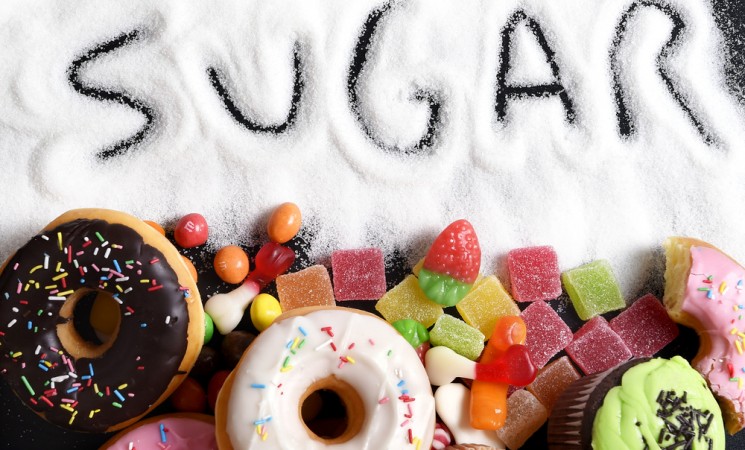Archived Content
This page is archived and provided for historical reference. The content is no longer being updated, and some of the information may have changed over time and could be outdated or inaccurate.

By Donald Chi, D.D.S., Ph.D.
Most people are unaware that tooth decay is the most common global disease. Children with untreated tooth decay frequently have toothaches, miss school and perform poorly in class, and are even hospitalized to receive extensive dental treatment. Alaska Native and American Indian children are particularly susceptible to tooth decay and have the highest tooth decay rates among all the vulnerable child subgroups in the United States.
Added sugars, like those found in sugar-sweetened drinks, are one of the main causes of tooth decay in Alaska Native children. A major challenge in evaluating programs to reduce sugar-sweetened drinks is how to accurately measure changes in added sugar consumption over time.
Added sugars, like those found in sweetened drinks, are among main causes of tooth decay in Alaska Native children
In a 2015 study published in BMC Oral Health, my colleagues and I used a validated hair biomarker to measure the amount of added sugars consumed by Alaska Native children and to see how added sugar consumption was related to tooth decay rates. The hair biomarker is an objective measure developed and validated in Alaska Native communities. It uses naturally occurring stable isotope ratios of carbon and nitrogen in hair to predict added sugar consumption and is an improvement over self-reported measures because it addresses potential misreporting of sugar intake.
We recruited 51 Alaska Native children ages 6 to 17 years through the Yukon Kuskokwim Health Corporation Dental Clinic in Bethel, Alaska. Caregivers completed a survey in Yup’ik or English. Children received a dental examination and provided a small hair sample.
Dental caries (tooth decay) is huge public health problem in Alaska Native children & added sugars are big culprit
Our main finding was that added sugar consumption was high. The average amount of added sugars consumed by children was nearly 13 times higher than the maximum amount recommended by the American Heart Association, which is equivalent to the amount of sugar in five cans of soda pop. Based on the survey data, most of the added sugars came from locally available sugar-sweetened beverages, like Tang and Kool-Aid, and were consumed at home.
We also found a statistically significant relationship between added sugar consumption and tooth decay. For every 40-gram increase in added sugar consumption (a can of soda pop has about 40 grams of added sugar), there was a 6.4% increase in the number of decayed tooth surfaces.
Added sugar intake assessed by hair biomarker was positively associated with tooth decay in sample of Yup’ik children
This study revealed opportunities to develop community-based programs to reduce added sugar intake and tooth decay rates in Alaska Native children. We presented study findings to various community members and stakeholders in the Yukon Kuskokwim Delta. Attendees expressed deep concerns about our study findings and a desire to generate solutions. Community Planning Groups were convened to help co-develop a culturally appropriate program, which has received tremendous support from various Alaska Native communities.
In its current form, our program will employ indigenous community health workers who will assist caregivers and families in making healthier beverage decisions for their children. We will also partner with local stores to provide families with healthier beverage alternatives. Our short-term goal is to evaluate this program in the Yukon Kuskokwim Delta. Based on what we learn, our longer-term goal is to eventually implement similar programs to other Alaska Native and American Indian communities.
Note
This research was supported by the University of Washington Royalty Research Fund, the National Institute of Dental and Craniofacial Research Grant Number K08DE020856, and the William T. Grant Foundation Scholars Program.
Read the Article
About the Author
 Donald Chi, D.D.S., Ph.D., is an associate professor of oral health sciences at the University of Washington. He is board certified in pediatric dentistry and dental public health. He completed an A.B. degree at Cornell University, a D.D.S. degree at the University of Washington, residencies in pediatric dentistry and dental public health at the University of Iowa, and a Ph.D. in health services research at the University of Iowa. His research focuses on children’s oral health inequalities and is funded by the National Institute of Dental and Craniofacial Research and the William T. Grant Foundation. He has published over 130 peer-reviewed manuscripts, abstracts, and chapters. He teaches public health to dental students and residents, and devotes his clinical practice to treating Alaska Native children in the Yukon Kuskokwim Delta. More information can be found on his University of Washington webpage.
Donald Chi, D.D.S., Ph.D., is an associate professor of oral health sciences at the University of Washington. He is board certified in pediatric dentistry and dental public health. He completed an A.B. degree at Cornell University, a D.D.S. degree at the University of Washington, residencies in pediatric dentistry and dental public health at the University of Iowa, and a Ph.D. in health services research at the University of Iowa. His research focuses on children’s oral health inequalities and is funded by the National Institute of Dental and Craniofacial Research and the William T. Grant Foundation. He has published over 130 peer-reviewed manuscripts, abstracts, and chapters. He teaches public health to dental students and residents, and devotes his clinical practice to treating Alaska Native children in the Yukon Kuskokwim Delta. More information can be found on his University of Washington webpage.








